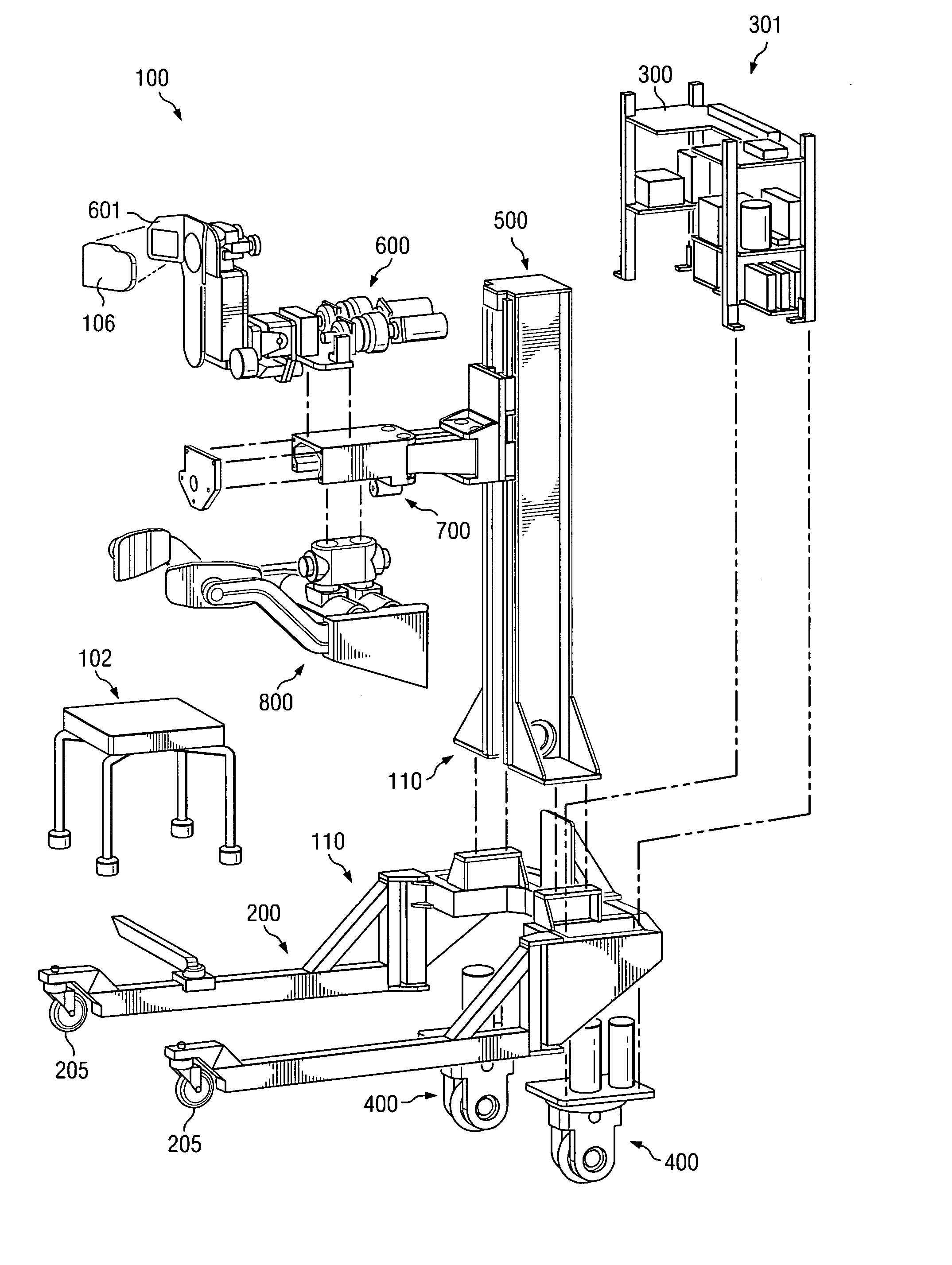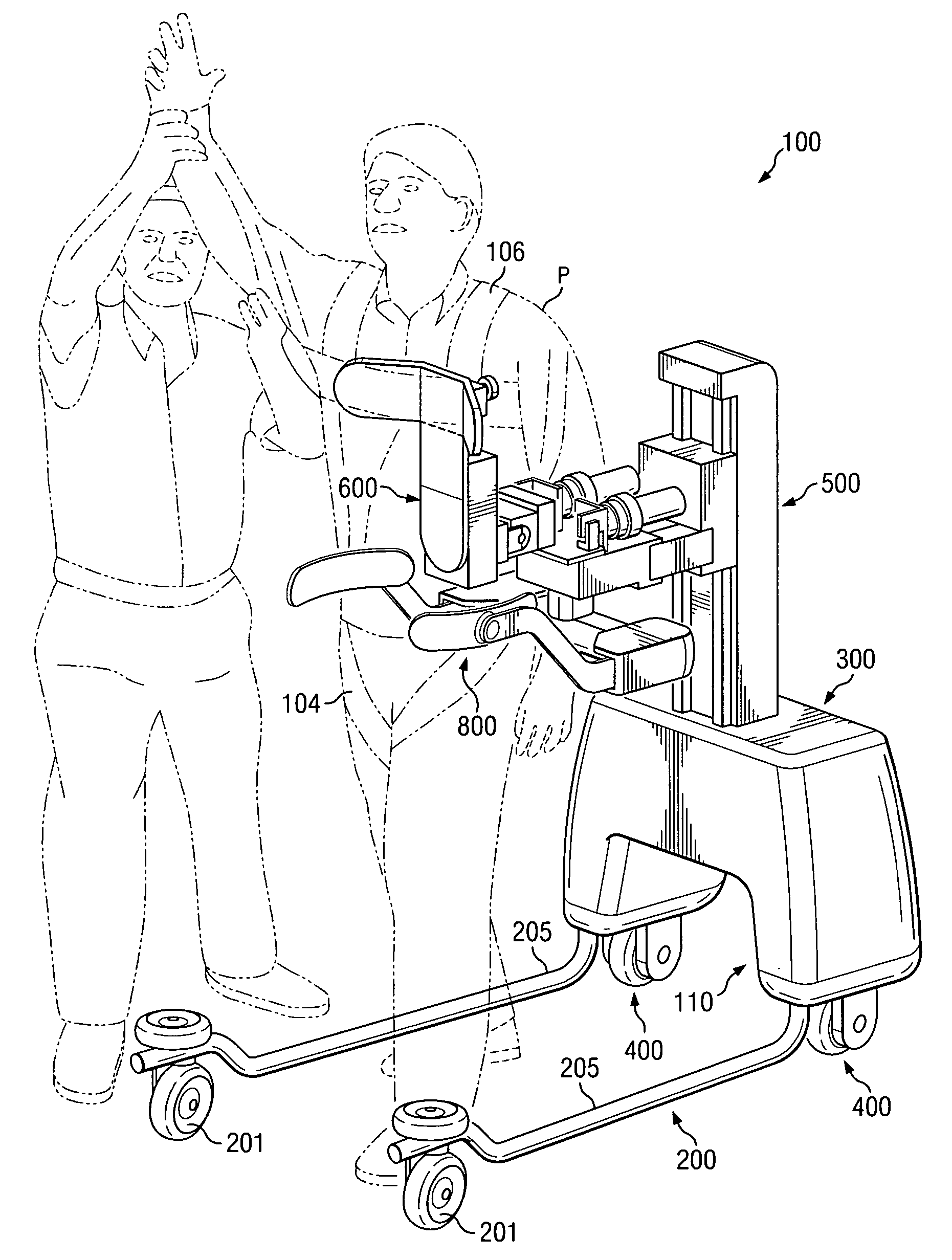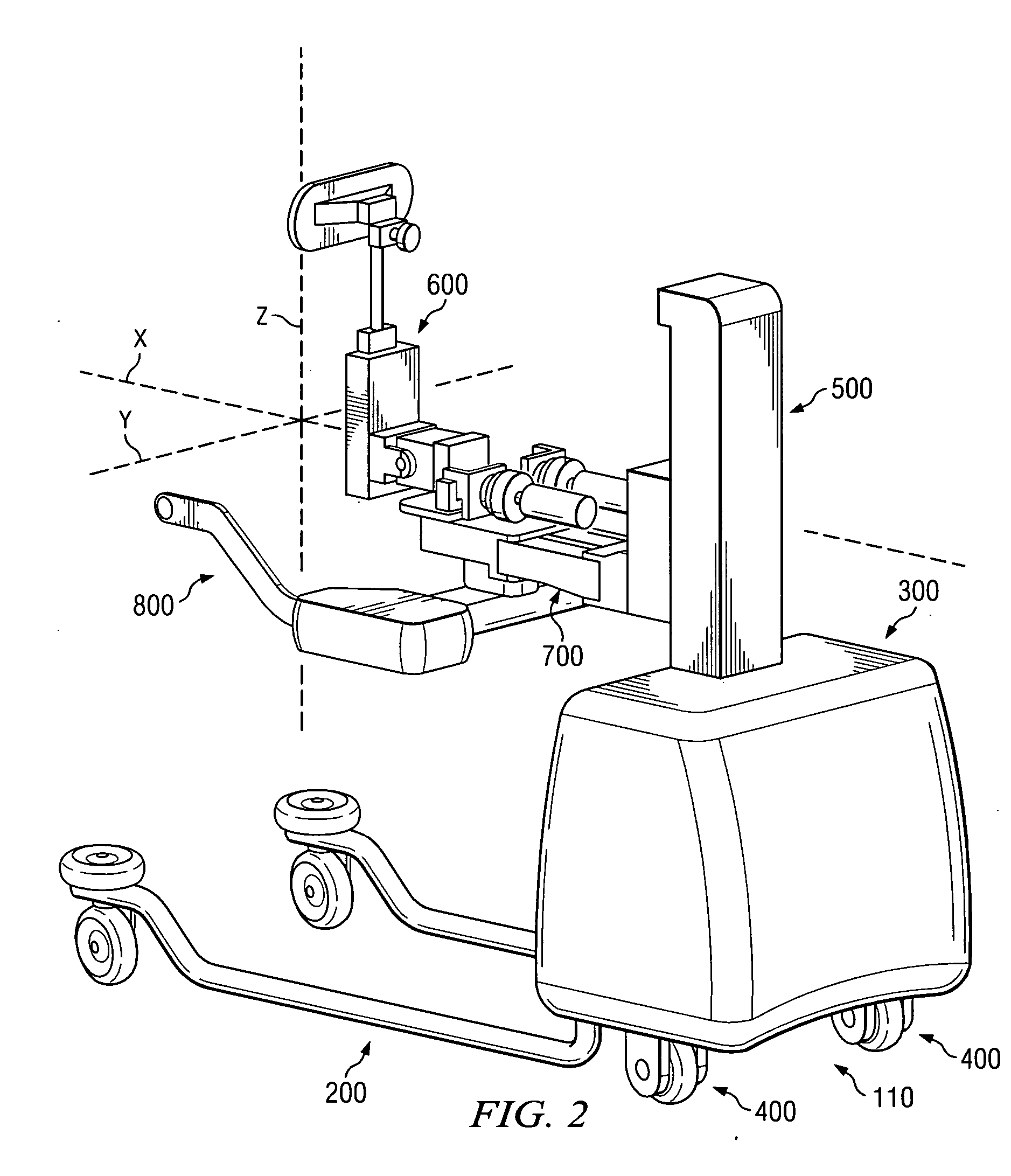[0008] According to a further aspect of the invention, the
physical therapy apparatus provided includes a frame which can travel over the floor or ground and an upstanding support arm affixed to the frame. A
pelvis support unit is fitted to the
pelvic region of the patient and has a powered
actuator which selectively applies a
vertical force to the
pelvis support unit relative to the base. In one of its
modes of operation, the
pelvis support unit applies a force in opposition to the force of gravity, relieving a therapist-selected portion of the patient's weight. The apparatus further includes a
torso support unit which is fitted to the torso of the patient at a position above the pelvis of the patient. The torso support unit includes a powered articulation about at least one axis relative to the base which is independent of the powered vertical actuator associated with the pelvis support unit. Sensors are associated with the pelvis support unit and the torso support unit, or the structures supporting them, to sense the spatial position and orientation of these units relative to the base and, preferably, one or more of the forces and torques applied to these structures. A
control unit is coupled to the sensors, to the powered vertical actuator and to the powered articulation to selectively move the pelvis support unit and the torso support unit relative to the base.
[0014] In a preferred embodiment, the present invention provides a computer-controlled,
servo-driven physical therapy aid designed to ensure a patient's safety during
gait and
balance training. The device has different features and
modes of operation to assist the therapist in providing efficient gait and balance therapy to patients with a wide variety of disorders and levels of disability.
[0015] The device has several technical advantages over conventional apparatus and methods. First, a single therapist can conduct training without the assistance from other staff. Second, the device provides a responsive
support system which permits natural
body dynamics to occur during walking. This allows the patient to work on his or her balance as part of the exercise.
[0016] Third, the device permits the therapist to safely challenge the patient. Risk naturally occurs with balance. The patient can experience the onset of a fall and has to make necessary corrections in order to recover and continue walking. However, an unsuccessful
recovery must not result in a potentially dangerous fall, and the present invention prevents this. Furthermore, because of the
inherent safety of the apparatus the therapist can challenge the patient to a larger degree than would be possible in conventional practice.
[0017] Fourth, the present invention enhances efficiency in the delivery of therapeutic services. In order to make best use of the limited duration of a therapy session, it is important that setup time, such as harnessing the patient, be kept to a bare minimum. Otherwise there is a disincentive for the therapist to use the device. The present invention is designed to make transfer into the device, configuration of the device and harnessing the patient very brief.
[0018] Fifth, the overall design of the device enhances the therapist's access to the patient's legs. Therapists often like to grasp the patient's legs, feet, etc. to guide the patient. The therapist typically likes to sit beside the patient—on a stool or the like—as the patient is exercising. The present invention moves as much of the support device as is possible toward the rear of the patient and otherwise out of the way of the volume through which the therapist conventionally accesses the patient.
 Login to View More
Login to View More  Login to View More
Login to View More 


